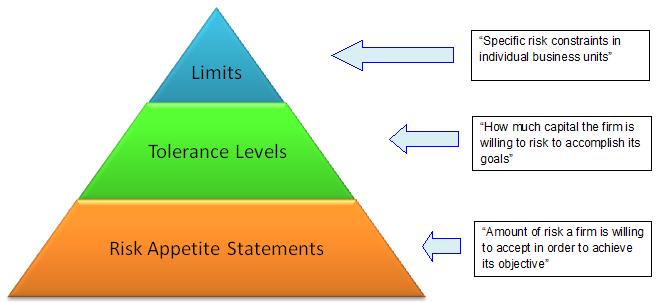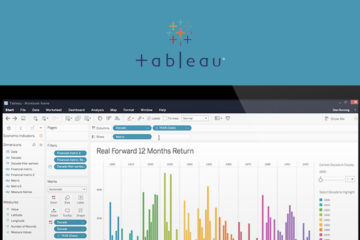Risk Appetite – Key Concepts
Introduction
A risk appetite is the amount of risk a firm is willing to accept in order to achieve its objectives. The purpose of the risk appetite is to assist in the process of setting the firms strategic objectives and in the management of risks. Articulating a risk appetite is a complicated task and involves participation from various departments. The risk appetite essentially sets the firms attitude towards risk taking. As part of the risk appetite, firms shall declare its risk tolerance level. The tolerance level illustrates how much capital the firm is willing to risk to accomplish its goals. In addition, risk limits should be defined in order to provide specific risk constraints in individual business units. 
Risk Appetite Characteristics
A risk appetite should be a formally written document that comprises all of the key business areas. The document should take into account the firm’s strategic direction and objectives. It should clearly outline the firm’s capacity to take risk and its tolerance for potential loss. In addition, a risk appetite must be regularly reviewed and approved by management and board of directors.
Quantitative & Qualitative Factors
The risk appetite document must include both quantitative and qualitative statements. For example, a quantitative measure can be the firm’s capital adequacy plan. A qualitative factor can measure the firms need to comply with regulations. Although a risk appetite must be a written document, its intent is not to be a stand-alone document. It must be clearly communicated throughout the organization and serve as a step in the strategic business planning process. It is important to have the document in writing as it allows various business units and stakeholders to discuss and agree upon specific statements. This increases transparency within the firm and resolves potential conflicts as a result of different views.
Risk Appetite: Benefits
Proper articulation of a risk appetite adds significant benefits to a firm. Subsequent to expressing the risk appetite, the firm will have clear vision of the acceptable risk tolerance levels and specific limits. Forming the risk appetite is a very healthy process for a firm because it opens communication amongst business units and with the board of directors.
Sources:
PWC: Risk appetite – How hungry are you?
E&Y: Risk appetite- the Strategic Balancing Act
Towers Watson: Risk Appetite- the Foundation of Enterprise Risk Management








